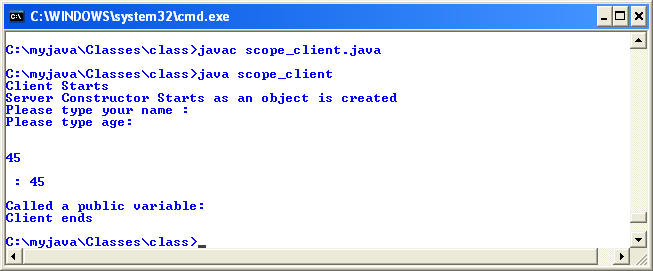- private and public fields.
- class constructor
- Scanner sc = new Scanner(System.in);
- nextLine();
import java.io.*;
import java.util.*;
// javac scope_client.java
public class scope_client
{
public static void main(String args[])throws IOException
{
System.out.println("Client Starts");
//creating object where ss is reference to the class simple server_1
scope_server ss = new scope_server();
ss.process();
System.out.println("Called a public variable: " + ss.str);
System.out.println("Client ends");
}//end of main
}//end of class
class scope_server
{
//constructor
public scope_server(){ System.out.println("Server Constructor Starts as an object is created");}
//these are the fileds
private int n1 = 0;
public String str="";
//method starts
//accesor type public
//return type void
//() place holder for parameters
public void process() throws IOException
{
Scanner sc = new Scanner(System.in);
System.out.print("Please type your name :");
str = sc.nextLine();
System.out.print("Please type age:");
n1 = sc.nextInt();
str += " : " + n1;
System.out.println();
}//end of process
}//end of class



